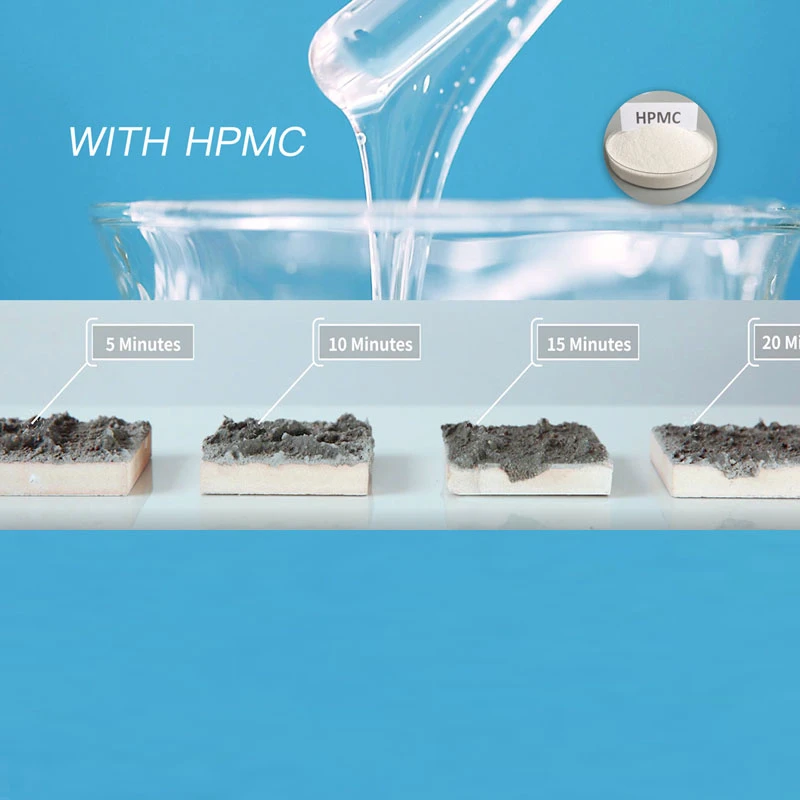The Role of HPMC in Construction An Overview
Hydroxypropyl Methylcellulose (HPMC) is a cellulose-derived chemical compound that has gained significant importance in the construction industry due to its unique properties and functionality. As a semi-synthetic derivative of cellulose, HPMC is widely used in various construction applications, particularly in cement-based formulations, tile adhesives, and other building materials. This article explores the characteristics, benefits, and applications of HPMC in construction.
Properties of HPMC
HPMC is valued for its water-retaining abilities, rheological properties, and film-forming capacity. These unique attributes make it an essential additive for improving the performance of construction materials. HPMC is produced by chemically modifying cellulose, which is derived from natural sources like wood or cotton. The resulting product is a white powder that is soluble in cold water, forming a transparent gel-like solution.
One of the most notable properties of HPMC is its ability to retain water in mortar and concrete mixes. This water retention helps to maintain the workability of the mix, allowing for easier application without compromising the strength and durability of the final product. Additionally, HPMC provides thixotropic behavior, meaning that it can become more fluid when agitated and regain its viscosity upon standing. This property is particularly beneficial in preventing sagging in vertical applications and ensuring smooth application of materials.
Benefits of Using HPMC in Construction
The incorporation of HPMC into construction materials offers several advantages. Firstly, it enhances the workability of mortars and adhesives, making them easier to spread and manipulate. This is crucial for applications like tile installation, where precise placement is essential for achieving a flawless finish. HPMC also improves adhesion between surfaces, ensuring that tiles, bricks, or other materials bond securely to substrates.
hpmc used in construction

Secondly, HPMC’s water retention properties contribute to improved curing of cementitious materials. Proper curing is vital for achieving optimal strength and durability in construction projects. By retaining moisture during the curing process, HPMC helps to prevent cracking and enhances the long-term performance of the materials.
Moreover, HPMC is non-toxic and environmentally friendly, making it a preferable choice in sustainable construction practices. Its biodegradable nature aligns with the growing trend towards eco-friendly building materials, helping to reduce the environmental impact of construction activities.
Applications of HPMC in Construction
HPMC is widely utilized in various construction applications. One of the primary uses is in dry-mix mortar formulations, where it acts as a binder and improves the workability of the mix. It is also a key component in tile adhesives, plasters, and coatings, providing the properties needed for effective application and adhesion.
In addition, HPMC is increasingly used in self-leveling compounds, where it helps to maintain the liquid state of the material during application and ensures a smooth finish upon drying. Furthermore, in the production of paints and coatings, HPMC serves as a thickener, contributing to the flow and consistency of the final product.
Conclusion
In conclusion, Hydroxypropyl Methylcellulose plays a vital role in modern construction. Its unique properties enhance the performance of various building materials, contributing to improved workability, adhesion, and durability. As the construction industry continues to evolve, the demand for efficient and sustainable materials will likely increase, making HPMC an invaluable component in future building practices. Its compatibility with eco-friendly initiatives further solidifies its position as a preferred additive in the construction landscape.
-
Rdp Powder: Key Considerations for Wholesalers in the Building Materials IndustryNewsJul.08,2025
-
Key Considerations for Wholesalers: Navigating the World of Hpmc - Based ProductsNewsJul.08,2025
-
Hpmc Detergent: Key Considerations for WholesalersNewsJul.08,2025
-
Key Considerations for Wholesalers: China Hpmc For Tile Adhesive, Coating Additives, Concrete Additives, and MoreNewsJul.08,2025
-
Crucial Considerations for Wholesalers: Navigating the World of Construction MaterialsNewsJul.08,2025
-
Key Considerations for Wholesalers Sourcing Additive For Cement, Additive For Concrete, Additive For Putty from Additive Manufacturer Shijiazhuang Gaocheng District Yongfeng Cellulose Co., Ltd.NewsJul.08,2025




